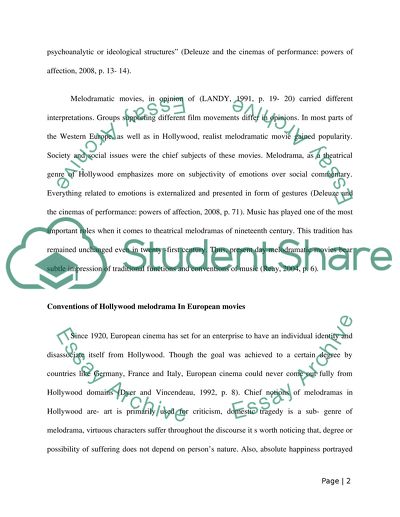Cite this document
(“HOLLYWOOD MELODRAMA IN EUROPEAN FILMS Essay Example | Topics and Well Written Essays - 2000 words”, n.d.)
HOLLYWOOD MELODRAMA IN EUROPEAN FILMS Essay Example | Topics and Well Written Essays - 2000 words. Retrieved from https://studentshare.org/visual-arts-film-studies/1474150-hollywood-melodrama-in-european-films
HOLLYWOOD MELODRAMA IN EUROPEAN FILMS Essay Example | Topics and Well Written Essays - 2000 words. Retrieved from https://studentshare.org/visual-arts-film-studies/1474150-hollywood-melodrama-in-european-films
(HOLLYWOOD MELODRAMA IN EUROPEAN FILMS Essay Example | Topics and Well Written Essays - 2000 Words)
HOLLYWOOD MELODRAMA IN EUROPEAN FILMS Essay Example | Topics and Well Written Essays - 2000 Words. https://studentshare.org/visual-arts-film-studies/1474150-hollywood-melodrama-in-european-films.
HOLLYWOOD MELODRAMA IN EUROPEAN FILMS Essay Example | Topics and Well Written Essays - 2000 Words. https://studentshare.org/visual-arts-film-studies/1474150-hollywood-melodrama-in-european-films.
“HOLLYWOOD MELODRAMA IN EUROPEAN FILMS Essay Example | Topics and Well Written Essays - 2000 Words”, n.d. https://studentshare.org/visual-arts-film-studies/1474150-hollywood-melodrama-in-european-films.


